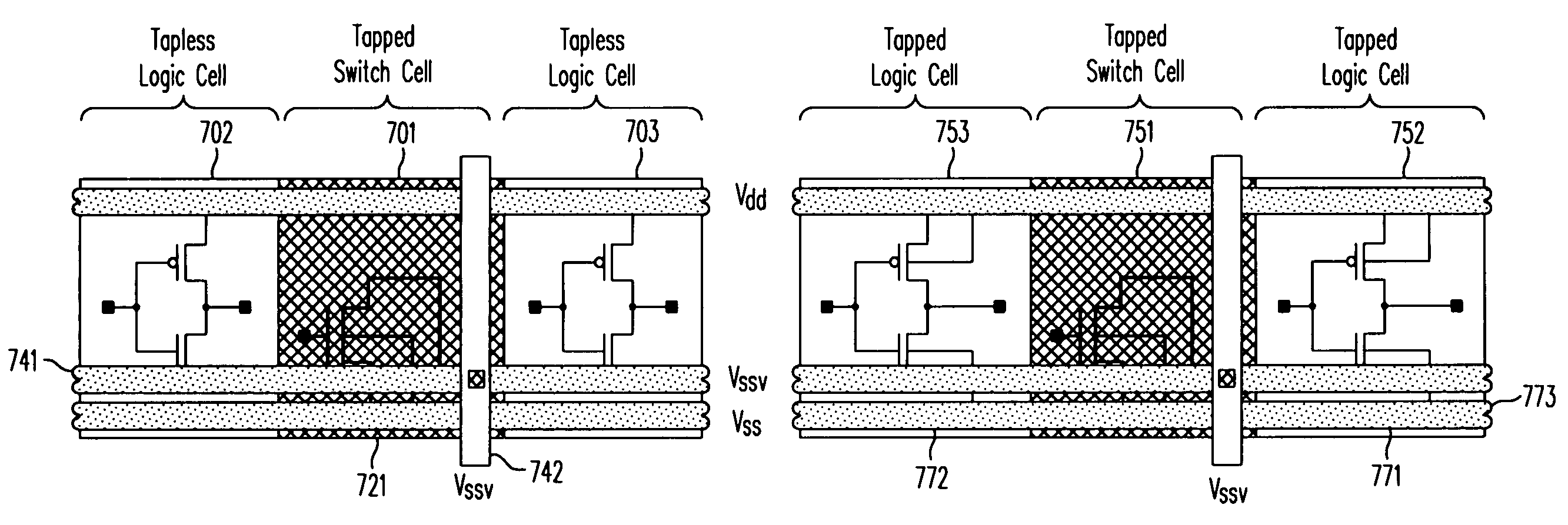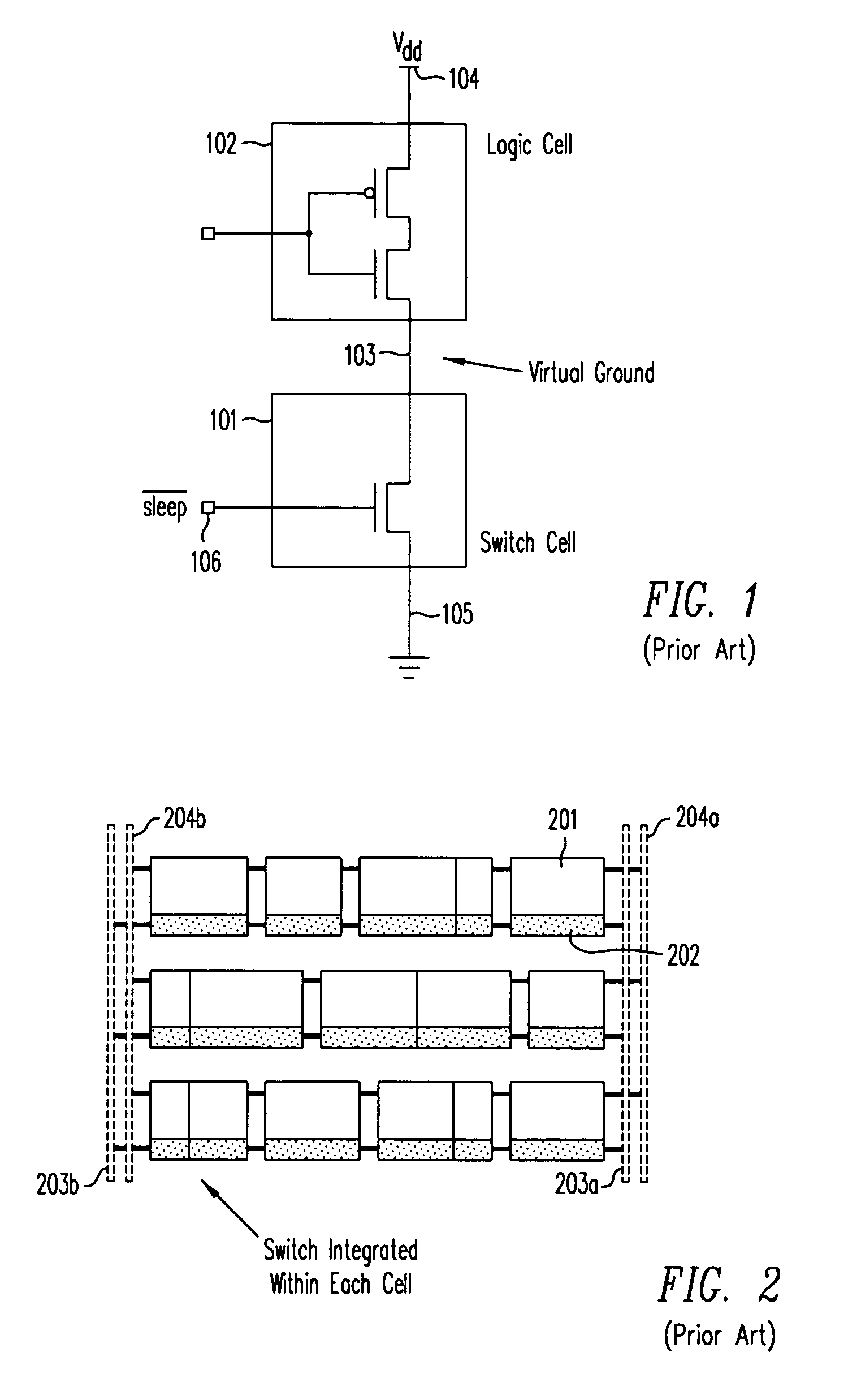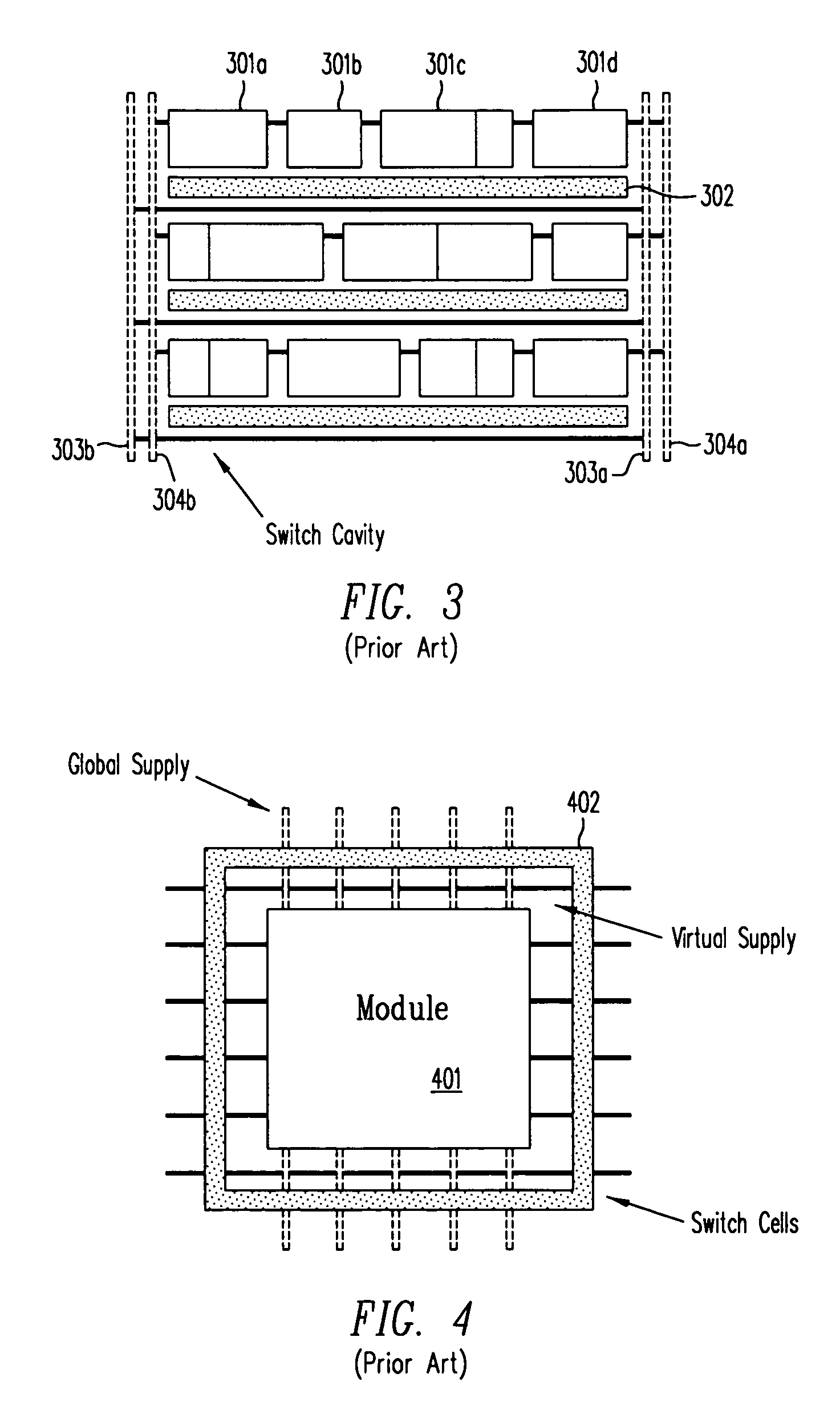Design method and architecture for power gate switch placement and interconnection using tapless libraries
a technology of tapless libraries and design methods, applied in the direction of cad circuit design, pulse technique, instruments, etc., can solve the problem of incurred silicon area costs in providing the third rail, and achieve the effect of less routing resources and higher circuit densities
- Summary
- Abstract
- Description
- Claims
- Application Information
AI Technical Summary
Benefits of technology
Problems solved by technology
Method used
Image
Examples
Embodiment Construction
[0027]The present invention is applicable to integrated circuits designed using a “tapless” library. In a tapless library, the transistors in a standard cell are not provided within the standard cell the conventional tap connections to their appropriate P-well or N-well (“substrate”), so as to reduce the area requirement. Instead, a well tap is provided in the switch cells to connect the substrate with the appropriate ground or power supply reference. In an integrated circuit built from a tapless library, switch cells are placed among the standard cells at regular or approximately regular intervals, or within a selected distance (e.g., 50 microns), so that the standard cells that share a substrate with a switch cell may share the switch cell's low resistance substrate connection to the power supply or ground reference.
[0028]FIG. 7, which is subdivided into FIGS. 7a and 7b, illustrates the advantages of using tapless standard cells power-gated by switch cells to form an integrated ci...
PUM
 Login to View More
Login to View More Abstract
Description
Claims
Application Information
 Login to View More
Login to View More - R&D
- Intellectual Property
- Life Sciences
- Materials
- Tech Scout
- Unparalleled Data Quality
- Higher Quality Content
- 60% Fewer Hallucinations
Browse by: Latest US Patents, China's latest patents, Technical Efficacy Thesaurus, Application Domain, Technology Topic, Popular Technical Reports.
© 2025 PatSnap. All rights reserved.Legal|Privacy policy|Modern Slavery Act Transparency Statement|Sitemap|About US| Contact US: help@patsnap.com



